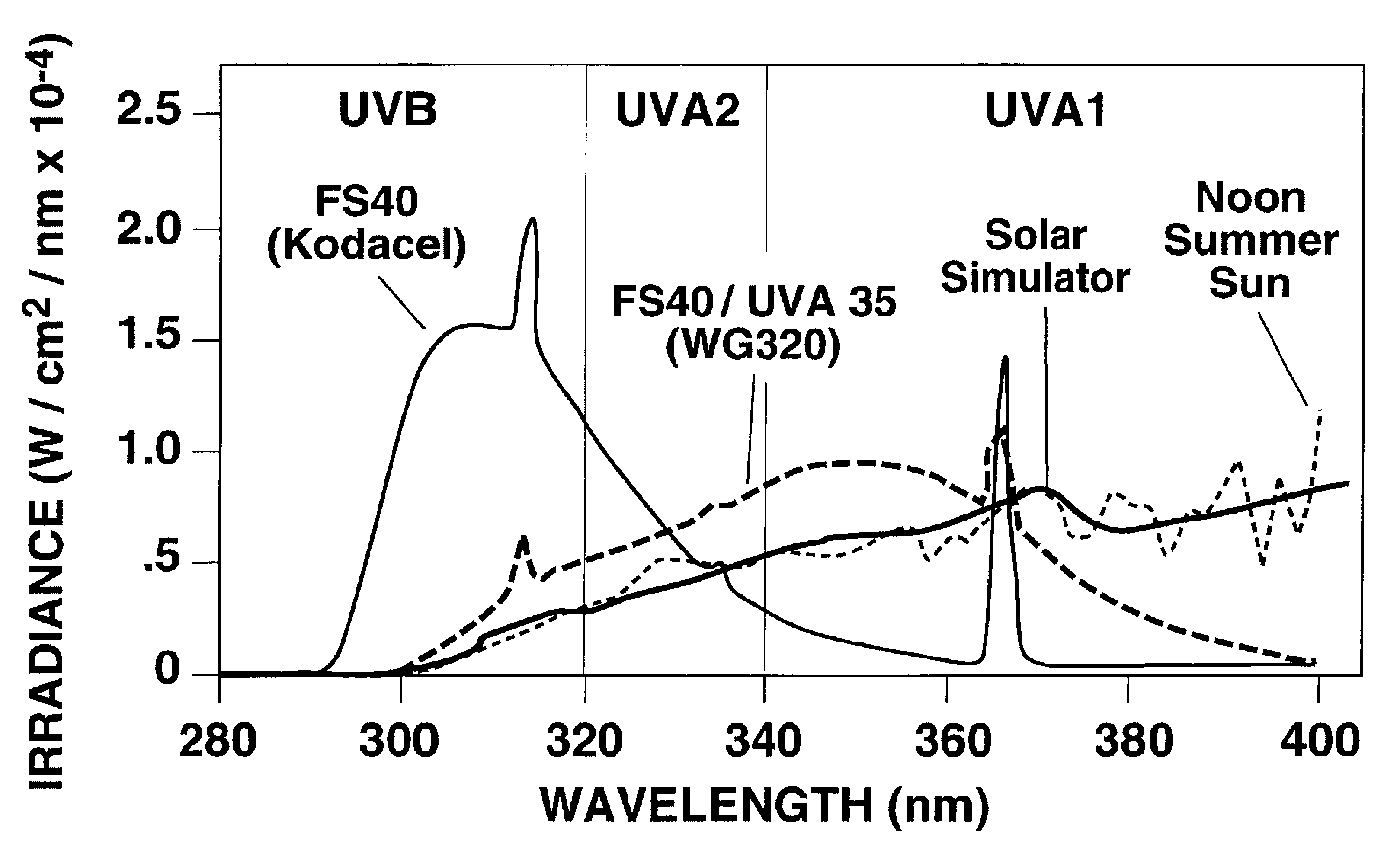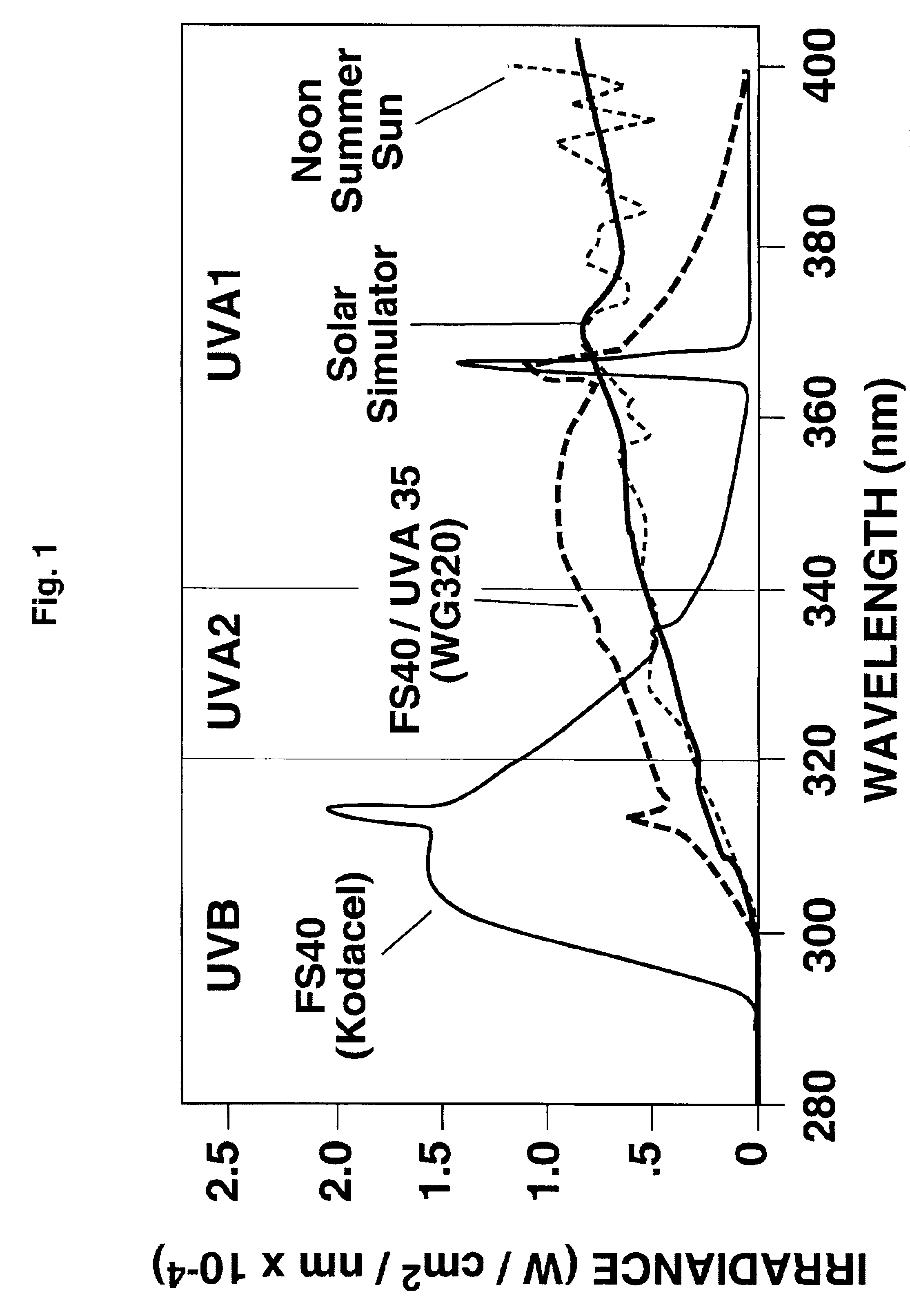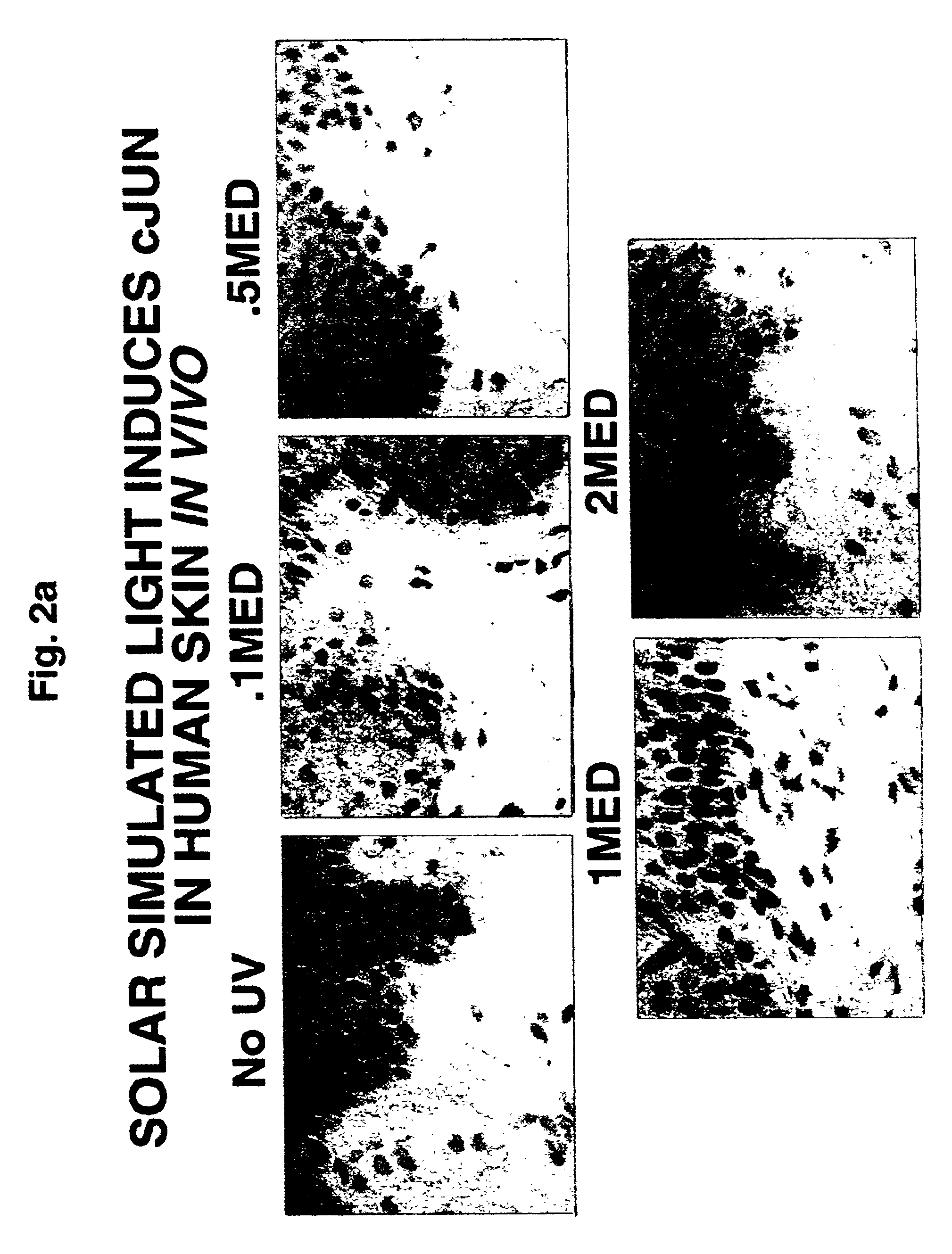UVA (> 360-400) and UVB (300-325) specific sunscreens
a sunscreen and ultraviolet light technology, applied in the field of sunscreens, can solve the problems of less than desirable blocking of ultraviolet light in this wavelength rang
- Summary
- Abstract
- Description
- Claims
- Application Information
AI Technical Summary
Benefits of technology
Problems solved by technology
Method used
Image
Examples
Embodiment Construction
[0024]FIG. 1 depicts an overlay of the wavelength distributions of the noon summer sun, a solar simulator used in the following experiments, and an FS40 brand UV lamp filtered with a Kodacell or WG320 filter, all commercially available. As noted in the Background, present sunscreen philosophy is to filter the UVA wavelengths only up to about 360 nm. However, it can be seen that there is a significant irradiance at wavelengths above this region from natural sun. Accordingly, our solar simulator is also designed to deliver these wavelengths.
[0025]FIGS. 2A and 2B depict photomicrographs of stained human in vivo skin samples from subjects exposed to varying amounts of solar-simulated radiation, the amounts being defined by the resulting MED. The samples are stained for the presence of cJUN protein (FIG. 2A), a signalling compound that forms part of AP-1, and also stained for the presence of NF-κB (FIG. 2B), a transcription factor. Signalling involving each of AP-1 and NF-κB results in t...
PUM
| Property | Measurement | Unit |
|---|---|---|
| UV wavelengths | aaaaa | aaaaa |
| UV wavelengths | aaaaa | aaaaa |
| wavelength range | aaaaa | aaaaa |
Abstract
Description
Claims
Application Information
 Login to View More
Login to View More - R&D
- Intellectual Property
- Life Sciences
- Materials
- Tech Scout
- Unparalleled Data Quality
- Higher Quality Content
- 60% Fewer Hallucinations
Browse by: Latest US Patents, China's latest patents, Technical Efficacy Thesaurus, Application Domain, Technology Topic, Popular Technical Reports.
© 2025 PatSnap. All rights reserved.Legal|Privacy policy|Modern Slavery Act Transparency Statement|Sitemap|About US| Contact US: help@patsnap.com



